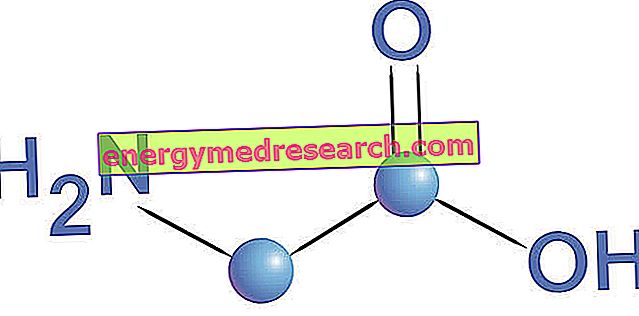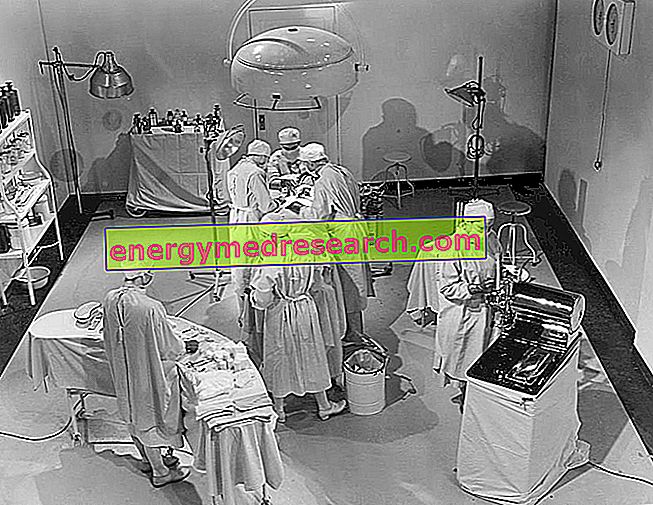Generality
Glycine is the smallest of the 20 amino acids commonly found in proteins.
With no chiral center, it belongs to the category of non-essential amino acids; it can in fact be abundantly synthesized by the human organism.
Glycine is easily taken through the diet, both through foods of animal origin, such as fish and egg white, and through products of vegetable origin, such as soy and other legumes.

Glycine: Chemical Structure
Glycine intervenes in various bodily functions, including:
- Synthesis of proteins, peptides and purines;
- Synthesis of ATP;
- Synthesis of nucleic acids;
- Hemoglobin synthesis;
- Glutathione and creatine synthesis;
- Synthesis of bile salts;
- Synthesis of structural proteins such as collagen;
- Synthesis of glucose and glycogen;
- Neurotransmitter activity.
Indications
Why is glycine used? What is it for?
Glycine has been used for years in various fields, from medical to cosmetic.
Each field of application is evidently justified by the biological and chemical-physical role of this amino acid.
In the clinical setting, glycine is mainly used as an antipsychotic and antispastic, thanks to the ability to interact with specific receptors located at the level of the central nervous system.
Preliminary studies, not yet confirmed, would also attribute antioxidant and anti-inflammatory potential to glycine.
Glycine and its sodium salt, indicated on the label with the abbreviation E640, are also used in the food industry as flavor enhancers and sweeteners, while in the cosmetology field they are used as pads in the preparation of deodorants and other hygiene products.
Property and Effectiveness
What benefit has glycine shown during the studies?
The use of glycine in the clinical setting is supported by numerous evidences, both experimental and clinical.
The clinical evidence focuses mainly on the neuropharmacological effect of glycine, effective in the
- to control the typical signs of spasticity of the lower limbs during chronic diseases, such as multiple sclerosis;
- improve the symptomatology in case of drug-resistant schizophrenia.
For their part, experimental studies would show an anti-inflammatory and antioxidant role of glycine, particularly effective in:
- Reduce the formation of neoplastic foci in the liver;
- Reduce the size of melanomas by suppressing angiogenesis and regulating normal cell turnover;
- Improve lipid metabolism;
- Promote the mitochondrial function of fibroblasts, safeguarding the synthesis of collagen (an interesting antiaging property)
Furthermore, owing to the precursor role with regard to creatine, ergogenic properties would also have been ascribed to glycine, although not confirmed.
Doses and method of use
How to use glycine
In the supplementary and dietary field, the daily use of glycine dosages higher than one gram is generally used, divided into several assumptions.
The pharmacological treatment of complex pathologies, such as schizophrenia, can make use of daily dosages even higher than 40 g. Medical supervision is mandatory in these surroundings.
Side effects
The use of glycine is generally safe and well tolerated.
Very rarely gastro-enteric adverse reactions have been observed, such as nausea, diarrhea and cramping pains.
Contraindications
When should glycine not be used?
The use of glycine is contraindicated in dehydrated, anuric patients suffering from severe liver disease or hypersensitive to the active ingredient.
Pharmacological Interactions
Which drugs or foods can change the effect of glycine?
Glycine administration could theoretically increase the pharmacological effect of antispasmodic drugs such as diazepam.
No other significant drug interactions are known.
Precautions for use
What do you need to know before taking glycine?
The use of glycine supplements is generally contraindicated during pregnancy and lactation.
Given the ability of glycine to be converted into the intestinal environment into ammonia, it is recommended to avoid the use of glycine in patients with liver function abnormalities.



